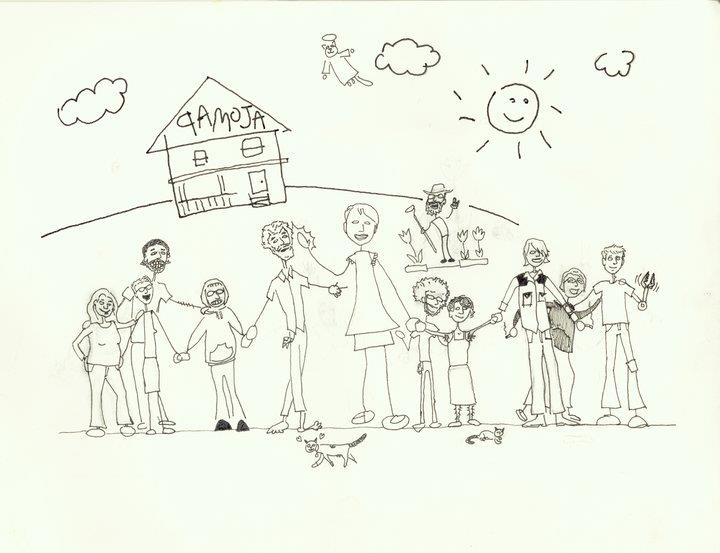Michael S. Smith
Selecting three favorite scenes from this year’s films is an uneasy task, like arranging novels on a shelf in order of their importance; I could always make strong arguments for so many others at any given time. On the other hand, the exercise helps me hone in on scenes that I found to be particularly effective and to understand how film works in the visceral ways it often does. And so I took a few moments to look back on the year and select those scenes that I continually thought about and that I believe are primary examples of the relationship between cinematic technique and storytelling.


1. Billie Frechette (Marion Cotillard) on the phone with John Dillinger (Johnny Depp) in Michael Mann’s Public Enemies.
In using high definition video to shoot a story set in the 1930s, Michael Mann, as Alison Willmore points out, has subverted “the visual coffin in which cinema tends to place the past.” His faithfulness to the era’s costumes, hardware, and settings seems beautifully out-of-sync with the modern way in which he presents the story; it’s all an odd, unique mixture. But, at a visceral level, Mann’s style is entirely synchronous with the film’s thematics. For both John Dillinger and Billie Frechette, lovers on the wrong side of the law, everything beyond their inner circle is an imposition: the police who trail them, the federal agents (including J. Edgar Hoover and Melvin Purvis) who seek a rapid end to Dillinger’s crime spree, the crime syndicate bosses who increasingly see Dillinger as a threat, and the limited time that Frechette and Dillinger feel they have left. Frechette, more than Dillinger, fears these impositions, feels burdened by them, and so Mann places her right up against a literal, physical imposition — a wall — as she frantically tells Dillinger over the phone to stay away from her and from Chicago, where she knows Purvis’ forces lie in wait. She feels the world closing in on them, and, in this series of shots, Mann allows his viewers to feel the same. Few directors this year seemed as proficient in framing their actors for dramatic effect as Mann did in Public Enemies.


2. Henri (Mathieu Amalric) reading a letter to his estranged sister, Elizabeth (Anne Consigny), in Arnaud Desplechin’s A Christmas Tale.
Over the course of a handful of films, Arnaud Desplechin has proven himself to be a master of the opening and closing iris, jump cuts, ellipses, split screens, intertitles, montages, and a host of other techniques, all of which he employs broadly and seamlessly in his films, as if paying homage to the very activity of filmmaking. He’s also an acute observer of interpersonal relationships and family dynamics and does not flinch at the more abrasive or disruptive ways in which individuals and entire families sometimes deal with each other. He is unapologetic in his directness and honesty but also prone to humor and empathy, and he marshals his techniques beautifully in the service of his ideas. Early in A Christmas Tale, Elizabeth, the eldest sibling in a dysfunctional family, decides to relinquish the debts of her brother, Henri, at the price of his banishment from the family. In the days after learning that their mother has terminal cancer, Henri writes a letter of reconciliation to Elizabeth. To augment Henri’s sentiments, which are initially sympathetic but then increasingly stern, Desplechin isolates him from the action by having him read the letter, in a studio, directly to the audience; the camera gradually zooms in as Henri’s words become more acerbic. Throughout, the action cuts to images of Elizabeth reading the letter as she transports her emotionally unstable son in a van. With these methods, Desplechin makes Henri’s communication and its reception more heartfelt and disturbing than more conventional means might allow. It’s a particularly beautiful moment, and it displays Desplechin’s skill in using specific methods efficiently to set the emotional tone of his story.
3. Josephine (Mati Diop), dressed in a white, walks towards her father, Lionel (Alex Descas), while in their apartment in Clair Denis’ 35 Shots of Rum.
I don’t have screenshots for this scene, and although I’ve seen the film only once, the moment nevertheless replays in my mind as one of the most vivid among all the scenes in all the films I saw in 2009. In 35 Shots of Rum, Denis traces the close relationship between a widowed immigrant father and his grown daughter, their daily routines, their intrinsic fear of change and independence, and the inevitable shifts that await them as their days move forward towards the time when she might marry and live away from him. Like Yasujiro Ozu, to whom Denis deliberately pays homage in this film, the French director lets the worries, jealousies, and moments of warmth and happiness between Josphine and Lionel slowly ebb and flow until their eventual parting becomes reality. Denis frames the action with great poignancy, as Josephine, at first entirely unseen, gradually emerges from a room and moves down a hallway, dressed in the gown that marks the most significant moment in this family’s life since the death of Josephine’s mother; it’s shift in their entire world. Denis, I believe, is a master formalist, proficient both with the more abstract and intellectual arrangements of a film like L’Intrus (2004) and with these sparer, simpler moments; and like Ozu, she’s able to convey emotional intensity in the most quiet and understated manner.
